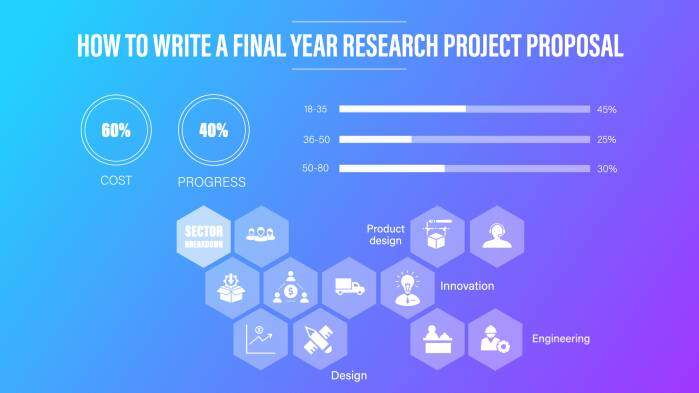How to Write a Final Year Research Project Proposal
A final year research project proposal is a persuasive document required in your final year of study. Its objectives are to:
1. Identify the work that is to be done
2. Explain why the work needs to be done
3. Persuade the reader that the you are competent for the work, have a plausible management plan and approach, and have the appropriate resources required to complete the task within the stated time and cost constraints.

What makes a good research proposal? One attribute is the look of your proposal. A strong proposal has an attractive, professional, captivating look. Furthermore, the information should be easy to access. A second attribute is substance. A strong proposal has a well-organized plan of attack. A strong proposal also has an indepth details needed to sell the project.
Research Project Proposal Required Format
According to writing.engr.psu.edu, format consists of the layout and typography of a document. In formatting your proposal, use the guidelines in Table 1. A template to produce your proposal exists at the following web page:
One aspect of layout is the incorporation of illustrations. In your proposal, each illustration should have a name and be formally introduced in the text. Illustrations consist of figures and tables. Figures include photographs, drawings, diagrams, and graphs. Each figure should have a stand-alone caption, and the key points and features should be labeled. Tables are arrangement of words and numbers into rows and columns. Use tables to summarize lists that the audience will try to find later (the budget, for instance).
Table 1. Format guidelines for requested proposal.
Aspect Description
Font for headings Boldface serif or sans serif: size in accordance with hierarchy
Font for text portion 12-point serif such as Times New Roman or Book Antiqua
Margins Standard, at least 1 inch
Layout One column, single-sided
Paragraphing Indented paragraphs, no line skip between paragraphs in a section
Page number Bottom centered
Figure names Numbered: Figure 1, Figure 2, Figure 3, and so forth
Figure captions Below figure in 10 point type
Table names Numbered: Table 1, Table 2, Table 3, and so forth
Table headings Above table in 12 point type
Source: http://www.lf.psu.edu/
Title Page
a. Title of project in initial capital letters
b. The sponsoring company and contact person’s name and information c. Team name and individual member names
d. Date
e. An appropriate picture of the product, a team logo, or both
Executive Summary
Content: A brief summary of the proposal
Length: one-third to one-half page, never more than one page
Emphasis: highlighting of the proposed technical and management approach
Table of Contents
Statement of Problem: the “Why?”
Summary of the request by the sponsor (the original problem statement)
Background:
Brief description of company and their business
Relevance or importance of problem
Background information to educate the reader
Previous related work by others—literature review with credible sources Patent search, if applicable
Detailed problem description, as you now understand it
Objectives: the “What?”
In the Objectives section, you translate the customer’s quantitative and qualitative needs into clear, objective design specifications. Define the scope of work and clearly state the project objectives, including the following:
a. Design specifications in specific, quantitative terms. For example, “The plate must be rotated three times at a speed of between 1 and 3 rev/s” or “Control the temperature of a 1 liter non-insulated standard glass beaker of water to 37.5 ± 0.5oC for three hours without temperature deviation.”
b. Critical design issues, constraints, limitations.
Approach: the “How?”
Although you may not know all the details of the problem solution, you should know a first design on how you will attack the problem, and you should have some design concepts. The purpose of this section is to present the process by which you will arrive at the final answer. This section answers the following questions:
1) What are the steps in the process? (Describe and use the nine-step model from Chapter 1 of Hyman’s text)
2) What are the benefits and advantages of employing a structured approach to design?
3) How will you generate solution concepts?
4) How will you analyze the performance of your solution?
5) How will you decide on the best alternative?
If you like this article, see others like it: